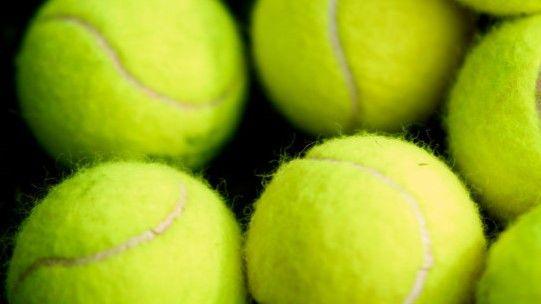How have British men improved on clay?

Jack Draper and Cameron Norrie are both through to the second week of the French Open
- Published
French Open 2025
Dates: 25 May-8 June Venue: Roland Garros
Coverage: Live radio commentaries across 5 Live Sport and BBC Sounds, plus live text commentaries on the BBC Sport website and app
For the first time in more than 60 years, two British men have reached the French Open singles fourth round.
Jack Draper will play Kazakhstan's Alexander Bublik on Monday after outclassing Brazilian rising star Joao Fonseca in straight sets to reach the last 16, where he was later joined by compatriot Cameron Norrie.
Norrie defeated fellow Briton Jacob Fearnley, also in straight sets, to set up an enticing contest against 24-time Grand Slam champion Novak Djokovic.
Not since 1963 - when the tournament was known as the French Championships, five years before the Open era began - have two British men made it this far at Roland Garros.
That year, Mike Sangster reached the semi-finals while Bobby Wilson exited in the quarter-finals.
But success has since been scarce for British men on the Paris clay courts - former world number one Andy Murray aside. So what, if anything, has changed?
Getting to grips with an 'alien surface'
British number one Draper has become a genuine force on clay, having reached the Madrid Open final last month and climbed to fifth in the world.
Norrie, 29, has rediscovered his form after a testing few years, while 23-year-old Fearnley, now out of his maiden French Open, is continuing to make encouraging strides in his first full season as a professional.
Such progress has not happened overnight.
Former British number one Annabel Croft travelled to the United States to train on clay during her playing career.
"It was such an alien surface. It was like other players coming over from America and learning how to play on grass. It was like a different sport," she said on BBC Radio 5 Sports Extra.
"When you're suddenly going on to a clay court, the ball is coming back and you learned how to construct a point.
"The whole mentality becomes something completely different."
Last year's first-round wipeout of British singles players prompted another inquest into the lack of British success on clay.
Historically, British players have not had as much exposure to clay courts as many of their rivals, particularly those from other European and South American nations.
The LTA said in 2024 there were about 1,300 clay courts in Great Britain - just over 5% of the 23,000 courts in total. In contrast, about 60% of courts are clay in Spain - one of the leading nations on the surface.
But more facilities are now being built to help the most talented youngsters gain experience on clay.
Alcaraz beats Shelton to reach quarters
- Published1 June
Draper outclasses rising star Fonseca at French Open
- Published31 May
Norrie beats Fearnley after firework disruption
- Published31 May
How Britons are overcoming barriers to success
The LTA has four clay courts - built to the same specification as the courts used at the Monte Carlo Masters - at the National Tennis Centre in Roehampton.
The governing body is also continuing to "form new partnerships" with clay-court facilities in Barcelona and Girona so young players can attend camps and training sessions.
Norrie and Fearnley's development took place overseas, with both players attending the Texas Christian University in America. It helped develop a steely mentality - something so crucial on clay courts.
"Norrie is very much somebody who Fearnley and the others at TCU looked up to," said BBC tennis correspondent Russell Fuller.
"Norrie would come back to practice while he was an ATP Tour player after he won Indian Wells and had success in other big tournaments.
"Fearnley and the others got a chance to practise with him and Norrie was the man they were trying to emulate.
"The level of competition on that circuit, playing a lot of matches away from home, builds the temperament and character of individual players. It is a very high standard."
Scheduling pleas 'like hitting head against wall'
- Published31 May
Britain's Patten through to doubles quarter-finals
- Published1 June
What tools are needed to succeed on clay?
Before the season began, Draper and Fearnley were shown practising sliding in a video posted by the LTA.
Sliding is one of the key skills players must master to succeed on clay.
"When that video was taken, it was probably the first time I was doing it since maybe 2017," Fearnley said.
"It's still something I'm getting used to, and it is extremely important, feeling the movement.
"I would say that is probably the biggest difference on clay - the tennis stays pretty similar, but it's more the movement that is different."
By being able to slide in to a shot, players can return the ball from a defensive position, and adjust their position more quickly to play a more aggressive shot.
It can be crucial in preventing a player falling behind in a rally.
Clay is a much slower surface than grass, which leads to longer points, more rallies and more running.
A high level of fitness is non-negotiable - and has been one of the key reasons for Draper's success on clay this year. Fearnley and Norrie are both renowned for their engines, too.
Players must also be comfortable hitting the ball in a different way.
When you think of 14-time champion Rafael Nadal holding court at the French Open, it is his lefty forehand that comes to mind.
The grip and follow-through with the racquet allowed him to hit with heavy top spin - a key component of his success.
That is because adding more spin to the ball makes it bounce higher and forces an opponent further back behind the baseline, creating time and space to hit a winner.
Related topics
- Published16 August

